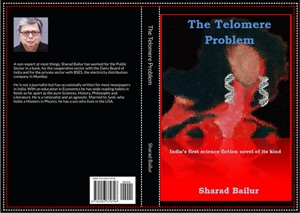Gautam Bhatt got the usual call late on Saturday evening. His friend Anant “Bapu” Damle wanted a get-together at the Parsi Dairy outside Santa Cruz railway station, in the suburb of that name in Bombay the next day. Parsi Dairy is not the name of the Irani restaurant. Its official name isSanta Cruz Restaurant. But it has a big billboard advertising products made by Parsi Dairy, a producer of dairy products like butter, cheese and milk-based sweets. Oddly enough, nobody remembers the real name of the restaurant. Everyone calls it Parsi Dairy. It is situated at the south end of the front of the Santa Cruz railway station that faces west in the suburb of that name in Bombay. The dairy products it sells forms a miniscule part of its real trade.
A modest open-air place adjoining the railway track with some thirty odd tables with benches, Parsi Dairy is a noisy "beer bar”, with flies occasionally promenading on the tables and on the glasses of the drinking crowd with fans whirring busily above them. Apart from the usual, which incidentally is only beer, nothing stronger, it offers very little else. Some crunchies spiked with chilly powder, and for the adventurous, an omelette made with froth beaten eggs, lots of onion, green chilly, coriander and mint.
Not the sort of place that Gautam Bhatt would go to. He was used to much more sophisticated places. But then Damle was that sort of friend. Damle believed that one must keep one’s feet firmly on the ground. If slumming was the same as ‘having one’s feet firmly on the ground’,slumming it would be. Bhatt indulged him because, in him, he had a valuable friend.
‘Get together’ invariably meant a steady and heady guzzling of beer beginning at 11 on Sunday mornings over Bhavnagri gathia (crisp chickpea noodle), spiked with onion and green chilli, right through till around two in the afternoon. Then, rather the worse for wear, each would go their separate ways, invariably feeling too full for an afternoon meal, and wanting to let it all out at the first available clean toilet. This was their routine on one Sunday each month.
Damle worked for a bank while Gautam Bhatt was a molecular geneticist and embryologist who had done his research in Edinburgh. Damle had this effect on people. One of his close friends was Raghunath Mashelkar, the scientist, who had been a schoolmate back in the old days of deprivation and chawls in the nineteen-fifties in Girgaum, the suburb that harbours many indigent ‘middle class’ Maharastrians even today.
Damle was a tall, fair, well-built man of about 40 with a perpetual, rather inane grin with gaps between his front teeth and close-cropped pepper and salt hair. Behind the small sharp eyes lay a brain like a razor. A national level bridge player, he worked at his bank merely for the steady income that it offered. He could have done anything and made a success of it, but ambition was not in his blood. It never is, with bhatjis (Brahmin from Pune and the Konkan coast). He was a Kobra bhatji (KOkanastha BRAhmin, or Brahmin from the coast of Konkan). His friends ranged from scientists like Raghunath Mashelkar and Gautam Bhatt to smugglers and technocrats. About the only people he avoided were politicians.
Talking about this unambitious attitude of most Maharashtrians, Gautam Bhatt had once asked Damle, sounding elaborately casual, “I have seen a building on Jangli Maharaj Road in Pune called Mittal Towers. I don’t recall having ever seen any building in Hazratganj in Lucknow called Abhyankar Towers.”

Damle had merely grinned. He was only too aware of his own people’s failings. The Mittals are baniyas (tradesmen) from Uttar Pradesh who are into business of all kinds. They are ambitious and hardworking and, like the Gujaratis, go anywhere and sell anything, unlike the Maharashtrians who almost seem to take pride in saying that business is not there in their blood.“Abhyankar” is a Maharastrian name.
Half way through their second bottle of beer, Damle said, “This news that somebody in Edinburgh has duplicated a sheep. Is it true?
“Yeah. It is called cloning. Friend of mine, IanWilmut, at the Roslin Institute. In fact, we worked on it together.” said Gautam Bhatt nibbling a crisp noodle of gathia.
“But you were nowhere mentioned in the media.” “I asked to be kept out”
“Why?” persisted Damle.
Gautam was feeling the effects of the beer perhaps. He should have kept quiet, or at least changed the subject.
“I am working on a much more hush-hush project.” he said with a small burp. He knew that the general hubbub of others like themselves at the other tables would drown out anything he said.
“Nobel in the offing?” asked Damle.
“Nah! More likely a government ban the world over.”
“Want to talk about it?” asked Damle.
“Well. It has to do with repeating what we did with Dolly to produce a cloned human embryo and bring it to term.”
“So, what’s keeping it from succeeding?” asked Damle, suddenly alert.
“The need for secrecy. The ethical angle. The politics.”
“Do you think you will ever succeed? It sounds fantastic.”
“Umm...Yes. I think I have the problem licked. To give credit where it is due, Ian Wilmut is as responsible for the success as I am. But the seminal research for the human cloning project, I did myself.”
“Look. I am not a scientist. So, tell me in a few short words. Tell me, is it possible to clone a human being?” asked Damle.
“Yes. I think we can do it. Right here in India, if it came to that. But then, imagine the uproar. The religious groups, the law, the politicians, the common man in the street. Tradition. Dharma. Besides what would I get out of it? Not even recognition. In fact, I would be considered some sort of Dr. Frankenstein who created the monster in Mary Shelley’s book.”
“Just for the sake of argument. Suppose you decided to clone a film star. Say, Waheeda Rehman. Or Asha Parekh. Could you do it?”
“I suppose so. Provided the film star allows me to take a sample of her tissue. We need tissue, or at least a blood sample. She will almost certainly refuse. It can be frightening to people who don’t understand the science behind it. And even those who do, have their reservations,”said Gautam.
“What about a person who cannot refuse?” askedDamle.
“Who?”
“Someone dead. A dead film star.”
“You are talking rubbish. A dead film star is someone who has either been turned into ashes,or into worms in a coffin, or worse, dust.”
“Suppose before she died she left blood in a blood bank?” Damle was capable of thinking far faster than most normal people.”
“Depends on how old the blood is, and in what state of preservation.”
“Tell you what,” said Damle. “Why don’t you clone Madhubala? She’s been dead and buried in the Santa Cruz cemetery.”
Gautam Bhatt barely managed to suppress a start. He had not expected Damle to suggest Madhubala. He had reasons. He would never reveal them to anyone.
“Blood my dear fellow. Even if we can locate it,it does not last. Bone marrow would be better, but after so long? When did she die? I know it was a couple of years after I completed my MBBS.”
“1969, I think”, said Damle.
“Twenty-eight years! Tissue does not last. And will we get permission to dig up the corpse? The Waqf Board (Muslim trust that looks after burial grounds for Muslims) that owns the cemetery will throw a fit or, more likely, cause a riot. No.It is out of the question,” said Gautam.
“Suppose you can locate a blood sample?”
“Tchah! You are talking rubbish,” said GautamBhatt.
“Tchah!” and “rubbish” were Gautam Bhatt's favourite words. Living in a world of ordinary people, this gifted scientist often found himself running short of patience. But, of course, friends like Damle did not mind. They knew him well enough. And there the topic was abandoned.
But deep down inside something had struck Gautam Bhatt like a bolt of lightening. It would become his obsession for the next twenty-five years. Gautam Bhatt never forgot the conversation. The idea would keep buzzing around in his mind till it had taken a life of its own. A life that would dominate Gautam Bhatt's life for a long time. And his own personal secret never to be revealed to anyone. It satisfied the secretive part of his nature.
An hour later Gautam left for home and so did Damle. Damle walked across the bridge over the railway tracks to go to his flat where he lived in the co-operative housing society of his bank. Gautam Bhatt walked down to his car parked some distance away and was driven away by Ram Singh his chauffeur.
Ram Singh could never understand what such a big boss like his did drinking beer in a seedy bar like Parsi Dairy. And he had noticed that his boss did not do anything much. He simply drank beer with his friend Mr. Damle and they talked for an hour or two and they dispersed. The same routine, once a month, approximately. It did not seem to amount to anything. It seemed that despite his extraordinary reach of contacts his boss kept his feet on the ground. And Damle was a special friend.
Unlike Damle, Gautam Bhatt was short, a mere five feet seven and rather portly. He had a thinning head of hair. It would get into complete baldness, but not for some time yet. Hooded eyebrows and crinkly, kind looking eyes looked down a bulbous nose on which sat a pair of heavy horn-rimmed glasses. A developing potbelly, and a thickening of the waist attested to incipient MAS or middle-aged spread. It did not exactly make him out to be the handsomest man in Bombay. He looked ordinary and was therefore unobtrusive. Not often was he noticed, even by women. And he liked it that way, for reasons that never were made clear. They were well into his past. And they would haunt his future.
 Damle had merely grinned. He was only too aware of his own people’s failings. The Mittals are baniyas (tradesmen) from Uttar Pradesh who are into business of all kinds. They are ambitious and hardworking and, like the Gujaratis, go anywhere and sell anything, unlike the Maharashtrians who almost seem to take pride in saying that business is not there in their blood.“Abhyankar” is a Maharastrian name.
Damle had merely grinned. He was only too aware of his own people’s failings. The Mittals are baniyas (tradesmen) from Uttar Pradesh who are into business of all kinds. They are ambitious and hardworking and, like the Gujaratis, go anywhere and sell anything, unlike the Maharashtrians who almost seem to take pride in saying that business is not there in their blood.“Abhyankar” is a Maharastrian name.





















